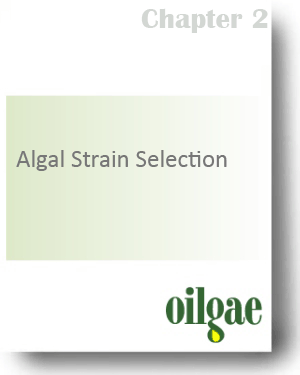Chapter 2 - Algal Strain Selection
This page provides details of the chapter 2, from the Comprehensive Oilgae Report. You can purchase this chapter alone using the payment button provided below.
Who should buy this chapter?
This chapter gives the reader a clear picture about algae and its potential as a fuel source. People who wish to know the basics of algae fuel can buy this chapter.
Introduction
Estimates show that there are over 30,000 different strains of algae. While such a large number might indicate exceptional potential for energy production from algae, in reality, only a small percentage of these could be used to derive energy in an economically sustainable manner. There are a number of reasons behind this fact and these will be detailed in this chapter.
List of Contents
- Importance of Algal Strain Selection
- Parameters for Strain Selection
- Strains with High Oil Content & Suitable for Mass Production
- Bacilliarophy (diatom algae)
- Botryococcusbraunii
- Dunaliella Spp.
- Euglena gracilis
- Isochrysisgalbana
- Nannochloropsissalina
- Neochlorisoleoabundans
- Phaeodactylumtricornutum
- Pleurochrysiscarterae
- Prymnesiumparvum
- Scenedesmusdimorphus
- Tetraselmischui
- Tetraselmissuecica
- Strains with High Carbohydrate Content
- Strains – Factoids
- Challenges & Efforts
- Which is Better - Microalgae or Macroalgae?
- Role of Genetic Engineering in Strain Selection
- Efforts & Examples in Strain Selection
Key Takeaways from the chapter
- Algae strain selection, while likely to be a resource intensive step, is critical for the success of algae energy business.
- There are known species of microalgae that contain high oil content and macroalgae species that are high in carbohydrates.
- Some of the strains suggested by NREL suited for efficient fuel production are the diatoms and the green algae.
- It is estimated that there are over 30,000 strains of algae, and hence choosing the most suitable strain for a specific type of culture medium and for a desired type of final energy product could be a resource intensive exercise.
- Choosing the most suitable algal strain needs consideration of parameters, such as the end products available, energy yield, performance in mass culture, and complexity of structure.
- While microalgae are currently the more preferred choice owing to their high oil content, macroalgae have their advantages as well, and thus could be considered in future as a biofuel feedstock.
List of Tables
- Strains with High Carbohydrate Content
- Macroalgae Strains with High Carbohydrate Content (by dry weight)
We are no more selling this report. |
|
No of Pages : 14 Last Updated : Dec 2011 Price : 100 US $ |
 |
Related Chapters from the Section I – Concepts & Cultivation

